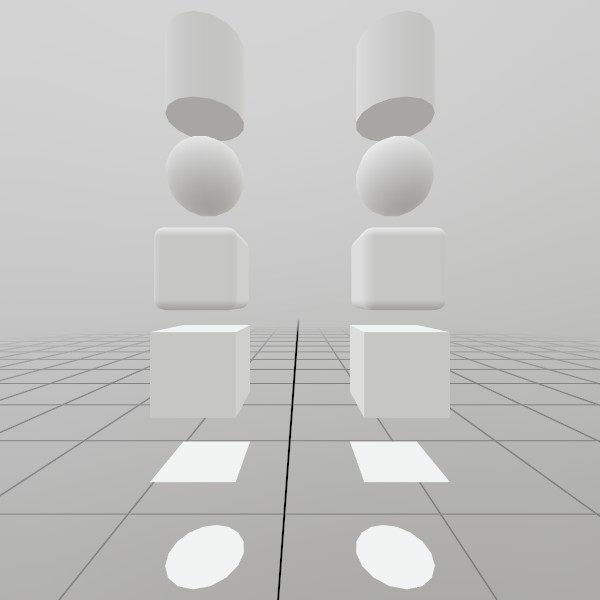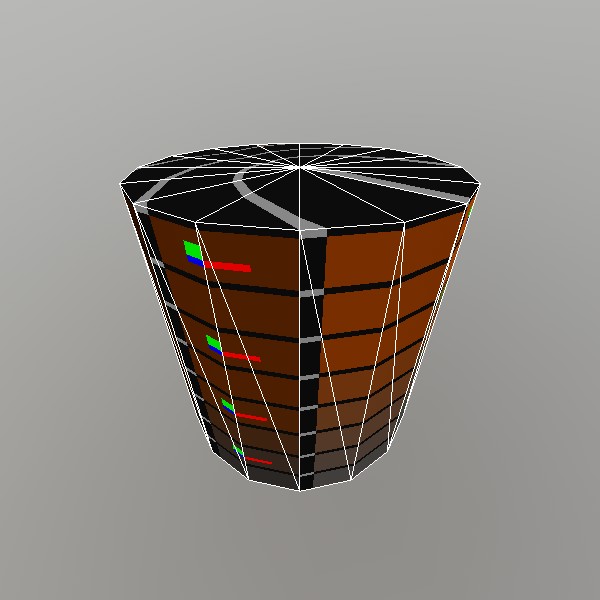Mesh.GenerateCylinder
static Mesh GenerateCylinder(float diameter, float depth, Vec3 direction, int subdivisions)
Generates a cylinder mesh, pre-sized to the given diameter and depth, UV coordinates are from a flattened top view right now. Additional development is needed for making better UVs for the edges.
NOTE: This generates a completely new Mesh asset on the GPU, and is best done during ‘initialization’ of your app/scene.
| float diameter | Diameter of the circular part of the cylinder in meters. Diameter is 2*radius. |
| float depth | How tall is this cylinder, in meters? |
| Vec3 direction | What direction do the circular surfaces face? This is the surface normal for the top, it does not need to be normalized. |
| int subdivisions | How many vertices compose the edges of the cylinder? More is smoother, but less performant. |
| RETURNS: Mesh | Returns a cylinder mesh, pre-sized to the given diameter and depth, UV coordinates are from a flattened top view right now. |
Examples
Generating a Mesh and Model

Here’s a quick example of generating a mesh! You can store it in just a Mesh, or you can attach it to a Model for easier rendering later on.
// Do this in your initialization
Mesh cylinderMesh = Mesh.GenerateCylinder(0.4f, 0.4f, Vec3.Up);
Model cylinderModel = Model.FromMesh(cylinderMesh, Default.Material);
Drawing both a Mesh and a Model generated this way is reasonably simple, here’s a short example! For the Mesh, you’ll need to create your own material, we just loaded up the default Material here.
// Call this code every Step
Matrix cylinderTransform = Matrix.T(0, 1, 0);
cylinderMesh.Draw(Default.Material, cylinderTransform);
cylinderTransform = Matrix.T(1, 1, 0);
cylinderModel.Draw(cylinderTransform);
UV and Face layout
Here’s a test image that illustrates how this mesh’s geometry is
laid out.

meshCylinder = Mesh.GenerateCylinder(1, 1, Vec3.Up);
Found an issue with these docs, or have some additional questions? Create an Issue on Github!
